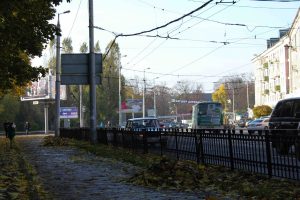Moscow’s destructive approach to its exclave of Kaliningrad [former East Prussian city of Koenigsberg – Ed.] over the last 70 years suggests what the Russian state will try to do to Crimea in the future: expelling the indigenous population, replacing it with Russians, militarizing the territory, and despoiling and degrading the economy and culture of the region.
The IPVNews portal this week publishes 29 pictures which better than any commentary show that Russian occupation of Kaliningrad has meant and why Ukraine’s Crimea, if it remains under Russian occupation, almost certainly will suffer a similar and equally disastrous fate.

That is because, the portal suggests, the two exclaves have so many things in common, including but not limited to a hated indigenous population Moscow is prepared to replace with ethnic Russians, a location that makes them ideal as military bases, and economies that Russia is prepared to drive into the ground.

“Today, 70 years after the transfer of East Prussia, it is obvious,” the portal says, “that the experiment” Moscow talked about – using Kaliningrad as a bridge to Europe – has completely failed. Instead, “the beautiful German houses have become communal apartments, the rural estates transformed into decaying farms, and the infrastructure degraded to African levels.”
One local historian says that “Kaliningrad oblast is a strange absurd construct, something like the incarnation of the ideas of Pelevin. All the cities were given new artificial names which completely reworked their history. For example, remarkable Tilsit, where the peace was signed, became Sovetsk and Koenigsberg received the name of Soviet executioner Mikhail Kalinin.”

And with these changes in names came a change in landscape, with the beautiful German buildings replaced by already decaying Soviet ones and German churches handed over to the Russian Orthodox Church which were then allowed to decay. As bad as the situation in the capital is, the situation in rural areas is worse, typical of the most backward part of Russia.

“Small groups of activists are trying to save even a few buildings, but under conditions of general chaos and constantly changing relations and agreements inside the power structures of Kaliningrad, they have achieved little,” and have not even been able to save what were the city’s remarkable streetcars.
What makes the IPVNews article so valuable is that it provides “before and after” pictures that highlight exactly what Russia has done to Koenigsberg and represents a clear warning to what Moscow will almost certainly do in Crimea if it is allowed to retain its Anschluss of that Ukrainian territory.
And despite Moscow’s claims that many of the exclave’s problems reflect its geographic position, the article shows that the problems Koenigsberg faces today emanate from Russian rule. That is because East Prussia was not simply taken by the USSR but divided up between the Soviets and the Poles. Today, the Polish section is flourishing.






















